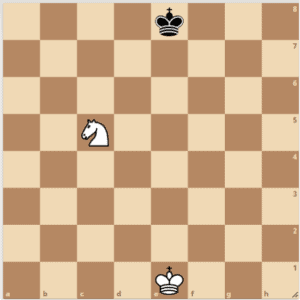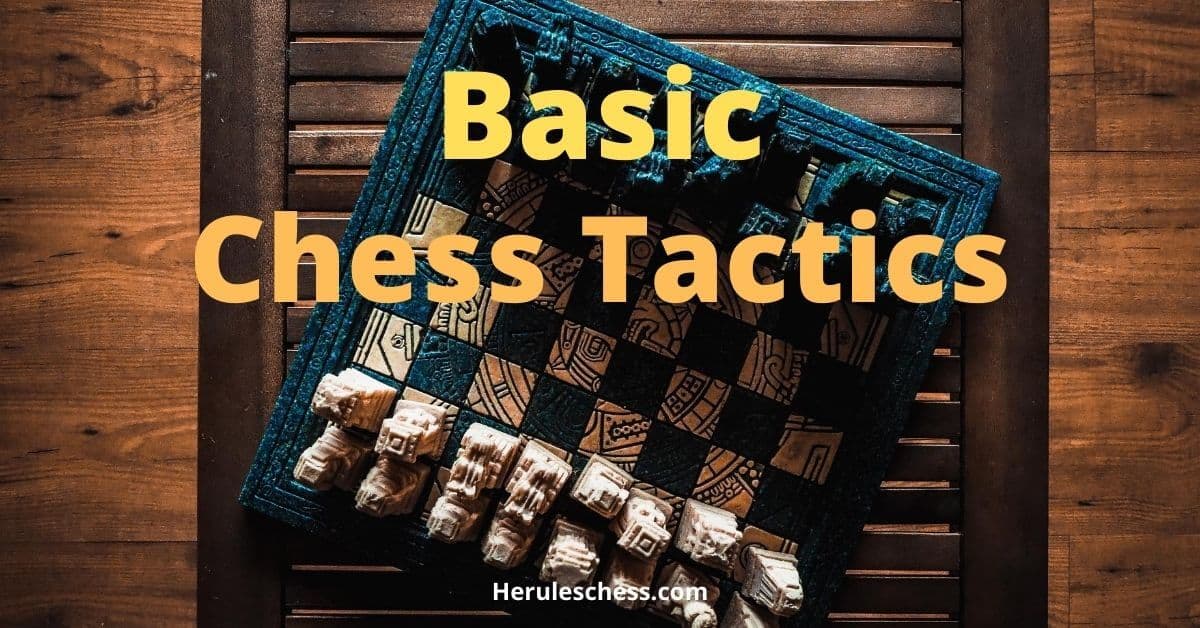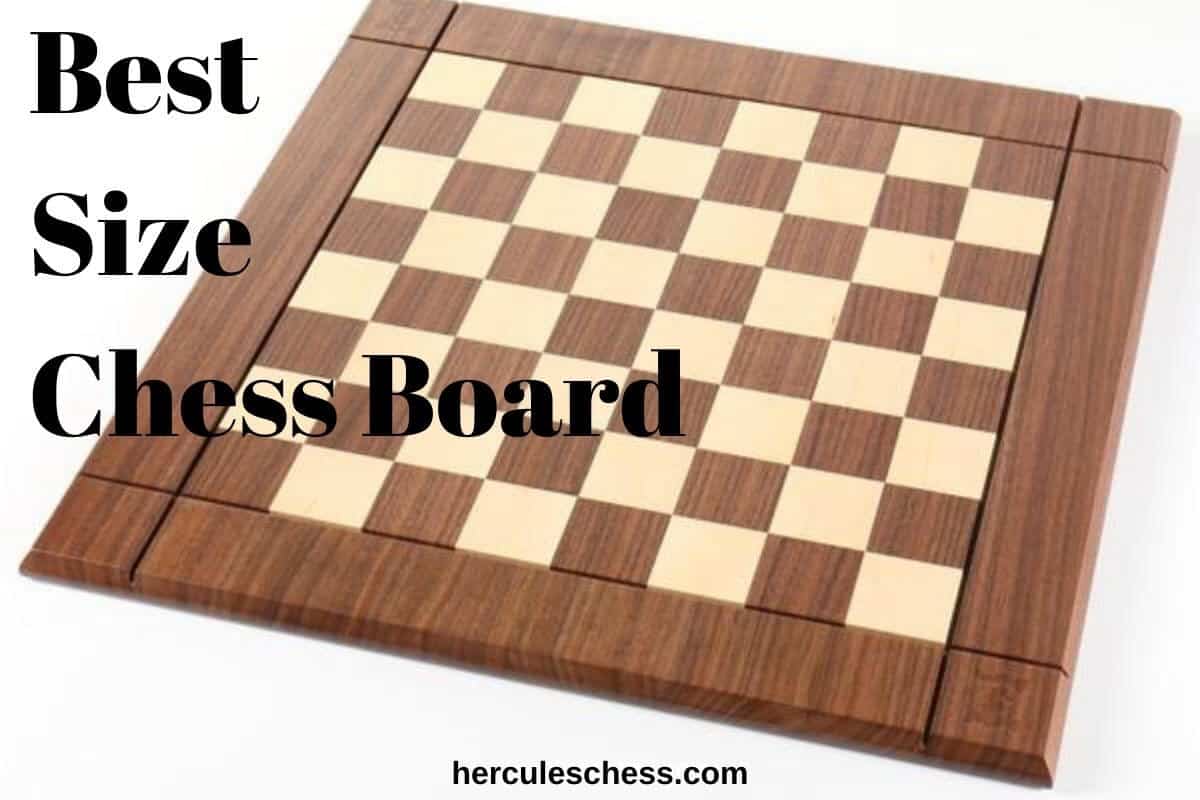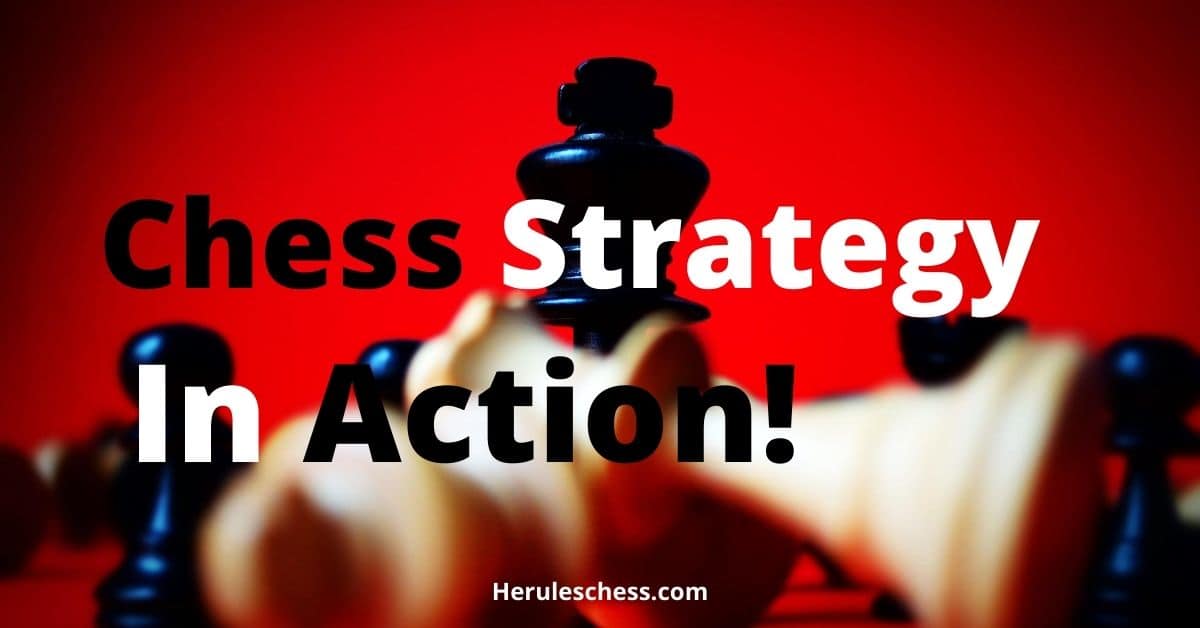What is a draw in chess? A draw in chess is another way to say that the game ended in a tie! The are five ways a chess game can end in a draw:
- Draw by Stalemate
- Draw by Insufficient material
- Draw by Agreement
- Draw by Threefold repetition
- Draw by 50 move rule
When you play a game of chess, you can win, lose, or draw a game. There are several ways in which a game has automatically declared a draw, but players can also decide to agree that their game is drawn, at which point they award themselves a half point each onto their score.
1. Draw By Stalemate
The game is drawn and you are in a stalemate when it is your move, you are not in check, but have no legal move. A stalemate is different from a checkmate because a stalemated king is not in check.
In this position, it is Black to move. The white Queen prevents the black King from moving to any of the surrounding squares, but he is not in check. He also has no other legal move, so it is a stalemate.
Black to move- Stalemate

No Stalemate-The game is not stalemated since Black’s pawn can advance on his move.

This is an almost identical position, except that Black now has a Pawn on a6. It is Black’s turn. The black King is not in check but is still unable to move. This time Black can make a legal move. His Pawn can advance one square forward and it is therefore not stalemate.
Tip to avoiding stalemate:
- Always keep your eyes peeled for stalemate traps, otherwise you may end up throwing away a winning position.
- Remember that if your opponent only has their King left on the board or if their other pieces cannot move, you should either make sure he can move to a safe square or that you have checked or checkmated him, otherwise a stalemate disaster may occur.
2. Draw By Insufficient Material (No mating material)
A game is drawn if there are not enough pieces for checkmate. There are four situations where checkmate is impossible:
- King against King
- King against King and Knight
- King against King and Bishop
- King and Bishop against King and Bishop (If Bishops are on the same color square)
If neither player has enough pieces to force checkmate, then the game is drawn. In this position, it can never be checkmated with these three pieces, wherever they are on the board.
Checkmate is impossible

3. Draw By Agreement
Players may agree to call a game a draw. The correct moment to offer a draw is after making a move. Once the draw offer is made, it is up to the opponent to decide whether or not to accept. The offer cannot be taken back.
If the opponent agrees to the draw, the game is over. A draw offer is refused by saying no or simply by making a move. Draw offers are only good for one turn. Once the opponent has made a move, the offer is canceled and the game goes on.
If a player offers a draw before making a move, the opponent may wait until after the player moves to decide whether to accept. If a player offers a draw while it is the opponent’s turn, the offer is still valid and may be accepted.
Related Post: Learn how to attack in chess and avoid draws
4. Draw by Three-Fold Repetition
Simply put, a game is drawn if exactly the same position is reached three times. A common example of this is perpetual check. Here, Black wants to play Qg2 checkmate.
White’s only hope of escape from this is to force a draw by perpetual check. Queen f8 check forces the black King to move to h7. Then Qf7+ forces the black King to move back to h8.
If White plays the same moves again, the black King has no option but to repeat his moves, thus White avoids being checkmated and forces a draw.
The white King is safe from the g2 checkmate due to the perpetual check. The black King is constantly being forced to move out of check from the attacking Queen. As a result, the game is drawn.
Draw by 50 Move Rule
A draw may be claimed by either player if fifty moves in a row are made without a capture or a pawn move. This means 50 moves for each player(100 total). Every time a pawn is moved or a piece is captured, the counter goes back to zero.
A player may only claim the draw on their turn, either after the opponent has just made the 100th move or before the player is about to make to 100th move.
This rule usually only applies late in the game when one of the players is trying to checkmate their opponent’s lone king.
Related Post: Ultimate guide to the rules of chess






